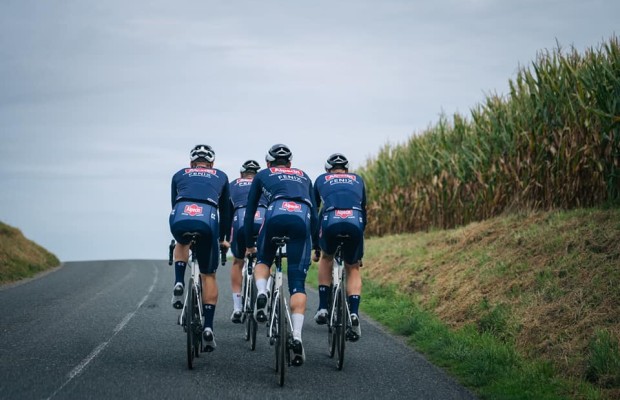Photochromic glasses, what are they, advantages and what no one tells you
Photochromic glasses represented a great leap in lens quality, as the lens adapts to the ambient light in open spaces. Almost magically, photochromic lenses darken or lighten depending on the sunlight at any given moment. But there is little magic involved, and in this post we will see how these photochromic sunglasses work and why they are so useful for road cycling and even more so for mountain biking.

How do photochromic glasses and lenses work?
This type of glasses includes a substance in its lens - silver chloride or copper chloride - that reacts to the ultraviolet rays emitted by the sun and is responsible for the photochromic lens darkening by trapping more or less light depending on the ambient light.

RECOMENDADO

Benefits of training in the cold

The cyclist's patience: how long, gentle training sessions build your best season

Tips for cycling in the rain

25 cycling gifts ideas to get it right

When do helmets have to be changed? Do they have an expiration date?

Some reasons to stay away from the road in winter
The first premise for these photochromic sunglasses to work is that you must be outdoors, as the vast majority only react to ultraviolet light. This means that they do not work with artificial light or if the sunlight is filtered by any glass - for example windows -, so they do not darken inside the car either.
Advantages of photochromic glasses for cycling and mountain biking
In sports like cycling, the advantages of these photochromic lenses are enormous. Often the brightness changes during the day and where there was radiant sun a few minutes ago, there may now be a sea of clouds that have darkened the day. In those cases, your lens will not impair your vision at any time, on the contrary, it will adapt to the lighting conditions.

In the mountains, these changes in brightness are even more frequent, especially if we venture into wooded areas where there is less light. With photochromic sunglasses for cycling, you will not have to take them off every time this happens, reducing the risk of something getting in your eye or losing control of the mountain bike.
Even if night falls or you go out directly without sunlight, you won't have to do without them or change the lenses for clearer ones, with photochromic mountain biking glasses you will always be protected without compromising your vision.

In the image you have an example of photochromic oakley cycling glasses.
What no one tells you, or at least is not widely known about photochromic lenses
Often people who want to buy these photochromic lenses wonder, what are the best photochromic cycling glasses? And the truth is that there are more and better options on the market, but here we are not going to mention any specific brand or model but some problems that all of them have and few mention.
I myself have photochromic lenses and I am delighted. When buying them, almost everything you find on the internet talks about their advantages and reasons to get them, but some things that I think we should know are not always mentioned.
Of course, there are different types of lenses and photochromic qualities, and some of them may solve the issues I am going to mention.

1. They do not darken instantly
The lenses do not darken and lighten instantaneously, they usually take 30 to 90 seconds to do so, and even much longer in some cases, even hours. In 95% of situations, they work very well, but keep in mind that if you enter an area with light and shadows on your MTB, the lens will never adapt to the speed you are riding at - unless it is uphill.
It is not at all a disadvantage, I just mention it because sometimes when we go to buy them, they demonstrate with an ultraviolet flash that instantly darkens the lens. This does not happen in normal situations.

2. They do not darken in high temperatures
As you hear it. At higher temperatures, the photochromic lens darkens much less and sometimes it may even remain very transparent. In beach areas with high temperatures, it can be a problem, so check the temperature ranges for the lenses you are thinking of acquiring.
3. They do not lighten in very cold temperatures
Just like with heat, they do not darken, in very cold situations, the photochromic mountain biking glasses darken a lot. But the problem is not that, the problem is that they can take hours to clear up again, forcing you to have to take them off in certain situations.
All these caveats point to extreme situations that we will not experience 90% of the time we go out cycling, so we still believe that photochromic cycling glasses are one of the best options if we are thinking of getting a pair.